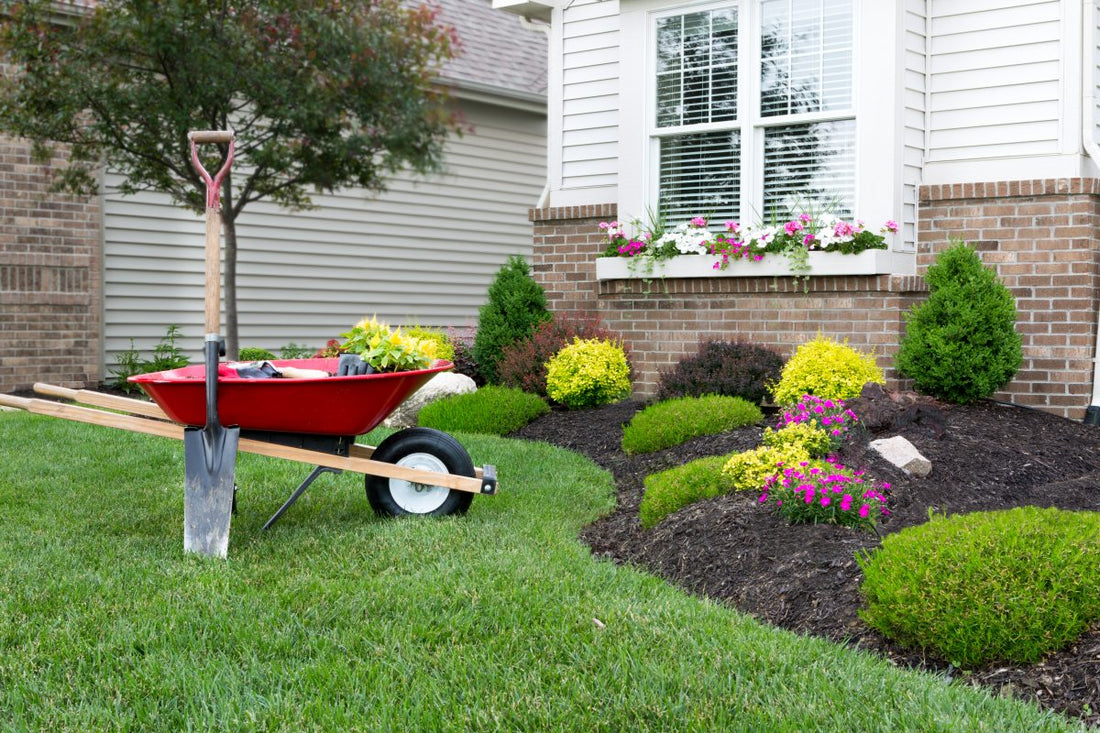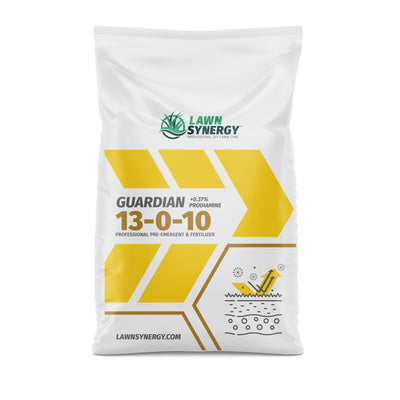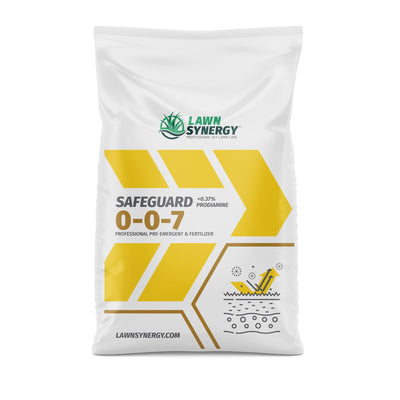Spring is here, and so are the weeds. Unless, of course, you stop them before they even sprout. If you've been asking yourself what pre-emergent to use in spring, you're not alone.
Timing, product type, and grass variety all play a role in keeping your lawn weed-free from the start.
The good news? With the right approach, you can block invasive weeds like crabgrass, sandburs, and dandelions before they take root.
Let's dive into the key factors that determine which pre-emergent is right for your lawn this spring and how to apply it for maximum results.
What this article covers:
- Spring Weeds to Watch Out For And Why Timing Is So Important
- How to Match Pre-Emergent Type to Your Lawn's Needs
- Ingredients in Spring Pre-Emergents: What to Look For
- What If You're Also Seeding in Spring?
Spring Weeds to Watch Out For And Why Timing Is So Important
Spring is prime time for weed germination, especially for crabgrass, dandelions, spurge, goosegrass, and sandburs. These weeds spread quickly once soil temperatures hit 50–65°F, depending on the species.
Pre-emergent herbicides work by creating a chemical barrier in the top layer of soil that stops weed seeds from developing roots and shoots.
But timing is critical: apply too early and rainfall, irrigation, or microbial activity can break down the product before peak germination. Apply too late, and seeds will already be active beneath the surface.
For best results, monitor soil temps closely and aim to apply just before your region's typical weed germination window.

How to Match Pre-Emergent Type to Your Lawn's Needs
Different weeds need different pre-emergents. Here's how to match your pre-emergent herbicide to your lawn's needs.
Cool-Season vs. Warm-Season Grass
For cool-season grasses like tall fescue and Kentucky bluegrass, pre-emergents are typically applied in early spring, just as soil temperatures reach 50°F.
Warm-season grasses such as Bermuda, zoysia, and St. Augustine require pre-emergents slightly later, when soil temperatures hit 55°F to 65°F.
For an in-depth guide on when to apply pre-emergent for Bermuda grass, check out this guide.
Seeded Lawns vs. Established Turf
If you've recently seeded or plan to seed this spring, your approach needs adjusting. Most pre-emergents will also block grass seed from germinating.
In that case, opt for products that allow seeding or time your application well before or after your seeding window.
A great example is applying pre-emergent 4 to 6 weeks before overseeding or delaying it until your new seed is well established.
Granular vs. Liquid Pre-Emergents: Which to Use In Spring
Both granular and liquid forms are effective, but each has its use case.
Granular pre-emergent is easy to spread and a popular choice for DIYers. Liquid pre-emergents are ideal for those with spray equipment and allow more precise coverage.
For most homeowners, granular options like Guardian 13-0-10 Pre-Emergent or Safeguard 0-0-7 Pre-Emergent provide the perfect balance of ease and effectiveness.

Ingredients in Spring Pre-Emergents: What to Look For
Understanding the active ingredients in your pre-emergents will help you choose the right solution for your specific lawn needs. Here are the most common active ingredients and when to use them.
Prodiamine
One of the most widely used and longest-lasting pre-emergents is Prodiamine. It forms a durable barrier against annual grasses, such as crabgrass, and broadleaf weeds, like dandelions.
Its residual control makes it ideal for early spring applications. It's found in Guardian 13-0-10 Pre-Emergent, one of the best pre-emergents for dandelions and tricky sandburs
Dithiopyr
A versatile ingredient that provides both pre- and early post-emergent control. Dithiopyr is especially useful if you're slightly late with your application, as it can still catch some recently germinated weeds.
It offers a safety net for late applications, especially when early-season conditions or timing challenges prevent an on-time pre-emergent treatment.
Oryzalin
A contact root inhibitor that performs well in warm-season lawns. Often used in southern climates, Oryzalin targets both grassy and broadleaf weeds and is typically found in granular formulations.
It pairs well with southern grasses like Bermuda and St. Augustine.

What If You're Also Seeding in Spring?
This part can be quite tricky. When overseeding with fescue or other cool-season grasses, it's best to hold off on standard pre-emergent weed preventers until your new grass has started to establish itself.
Sometimes, using a starter fertilizer like our Starter Fertilizer 15-20-10 can give your young grass a healthy boost without interfering with the seed's growth.
Try dividing your lawn into zones: plant seed in one section this spring and apply pre-emergent only to the remaining areas. Come fall, switch up the strategy by applying pre-emergents to those areas while seeding elsewhere.
Alternatively, you might choose to delay pre-emergent use altogether and instead promote thick, vigorous growth that naturally outcompetes weeds.
This approach requires a bit of planning, but it can lead to a healthier, weed-resistant lawn in the long run.
Conclusion
Choosing what pre-emergent to use in spring comes down to your grass type, your weed issues, and whether you're seeding.
By timing your application well and picking a formula tailored to your lawn's needs, you can stop weeds before they start.
Lawn Synergy partners with homeowners to provide professional-grade solutions and expert support, so you can skip the guesswork and enjoy a lawn that looks professionally maintained. If you're ever unsure, get in touch today.
Ready to learn more? Check out these articles:
-
Best Pre-Emergent For Sandburs
-
Best Pre-Emergent For Dandelions
-
What Pre-Emergent Should I Use
- Best Pre-Emergent for North Texas
- Best Pre-Emergent for Poa Annua
- Best Pre-Emergent for Arizona
- The Best Pre-Emergent for Zoysia
- Best Pre-Emergent for Bermuda Grass in Texas
- Is Pre-Emergent Safe for Dogs?
- Is Pre-Emergent Toxic?
- Does Pre-Emergent Kill Clover?
- Should You Mow Before Pre-Emergent?
- Are Pre-Emergent Herbicides Safe?
- Best Fall Pre-Emergent
- Best Pre-Emergent for Spring



